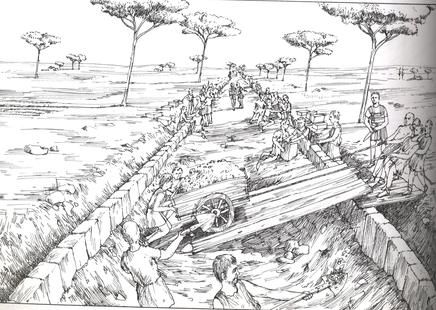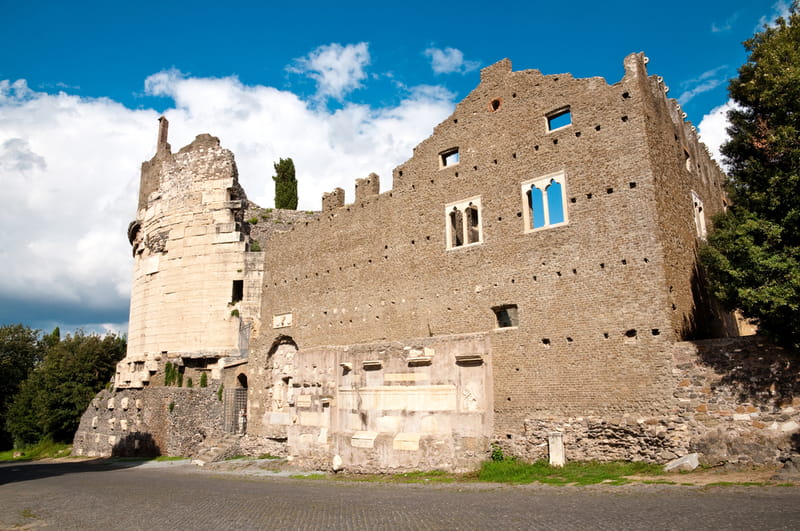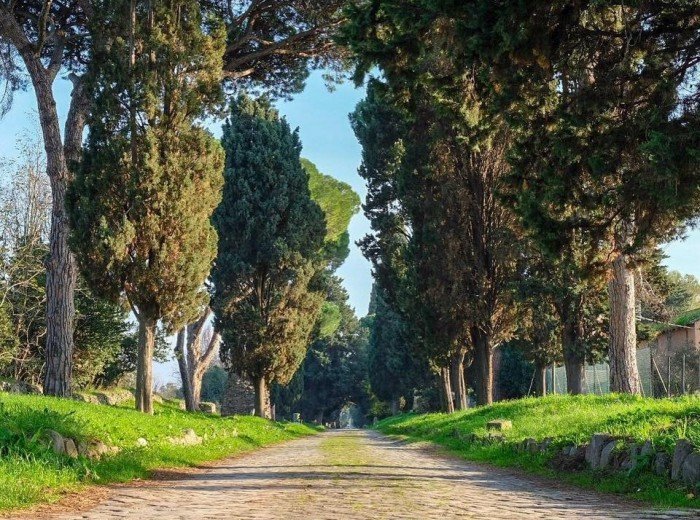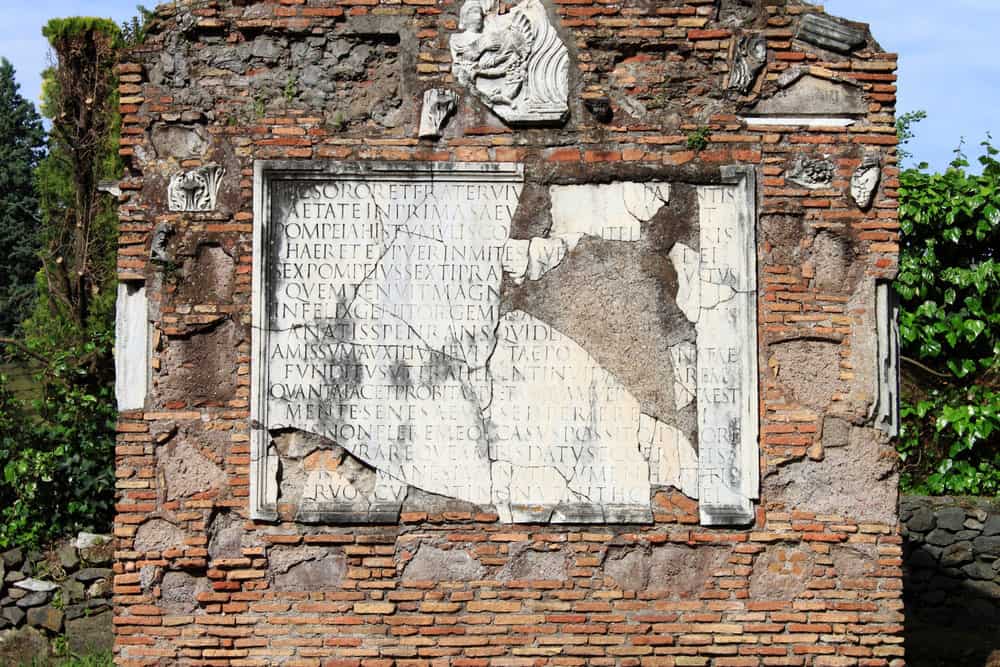The Roman Empire is famed for its roads, cutting through the countryside as straight as arrows. Yet, none is quite like the Appian Way; the “Queen of Roads” (Statius 45 – 96 AD).
With its construction commencing in 312 BC, Via Appia Antica took less than half a century to reach completion. Above its steadfast cobbles, history has acted out its fascinatingly relentless play of events to be forgotten, remembered, and reimagined.
For on the Appian Way Spartacus and his gladiatorial rebels faced crucifixion in 71 BC, Peter the Apostle encountered Christ risen and asked “Lord, where are you going”, and hundreds of thousands of Rome’s deceased were laid to rest in catacombs and burial monuments lining the road’s edges.
But what remains today along this ancient road? Find out below!
The catacombs of the Appian Way
There are burials that date back to some of Rome’s earliest moments. However, some of the best-preserved and intriguing catacombs are the early Christian cemeteries.
Whilst the bodies no longer remain, the dark, winding corridors offer enough of a macabre aura for the visitors of these fascinating monuments of times gone by. The catacombs of San Callisto, San Sebastiano, and Domitilla represent some of the best catacombs in Rome, and each helps us build an important understanding of the relevance of Christianity in ancient Rome.
Yet, as is the case with much of Rome’s history, Christianity is not the only prevalent religion on display. Amongst the necropolises that stretch outside ancient Rome’s walls are bastions of Jewish history. With a Jewish Catacombs and Old Appian Way Tour, visitors can delve down into the Jewish catacombs of Vigna Randanini.
Standing separate and modest, the Jewish Catacombs provide a strong correlation to the relative poverty suffered by the Roman Jewish population, as well as their desires to avoid customs of cremation linked to Roman and Greek customs.
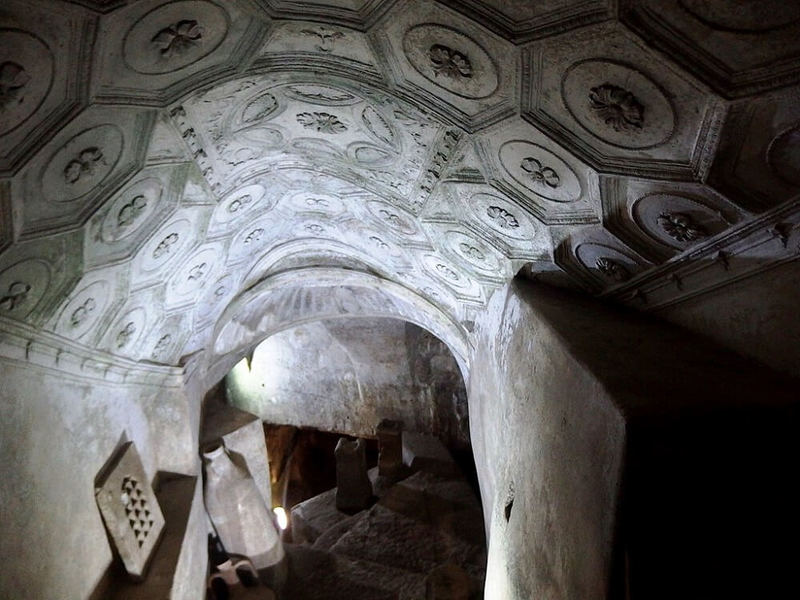
Descending into the Catacombs of San Sebastiano
The aqueducts along the Appian Way
The Roman Empire is synonymous with the aqueducts it placed throughout Europe and beyond. So, there is not much more of a spectacular sight than seeing these stunning remains that are situated along the “Queen of Roads”.
Located in the Park of the Aqueducts, which spans 240 hectares of countryside to the south of the Eternal City, one can find two main aqueducts. Whilst one is a recent 16th century addition, the other can be traced back to the 1st century – and both remain remarkably intact, proving the durability of Roman engineering.
Perhaps when you arrive in the Park of the Aqueducts it may feel familiar. Well, for movie lovers this may be the case, with the opening fly-over scene of Federico Fellini’s classic La Dolce Vita taking place over this very stretch of Roman countryside.
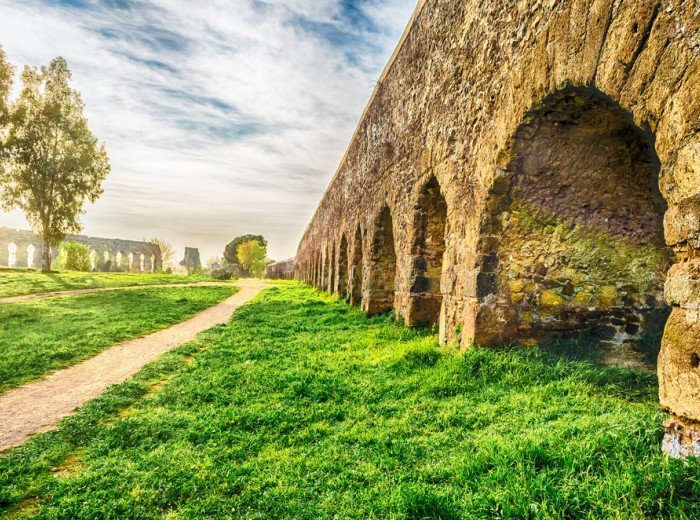
Roman aqueducts
How best to travel the Appian Way?
Driving to the Appian Way before traversing the more pedestrianized aspects of the ancient road is a viable option taken by many tourists. However, we believe that the best way to see the key aspects of Via Appia Antica is by bike.
With our Appian Way Bike Tour, we will meet in the city center before venturing outside Rome’s ancient walls and hitting the Roman highway. Next, you will discover Rome’s ancient ramparts at Porta San Sebastiano, before passing the Villa of Maxentius, the emperor killed by Constantine. Finally, look back towards the city to gain an exquisite view of the 7 hills of Rome, as well as the enormous Aurelian Walls that still surround the center today.
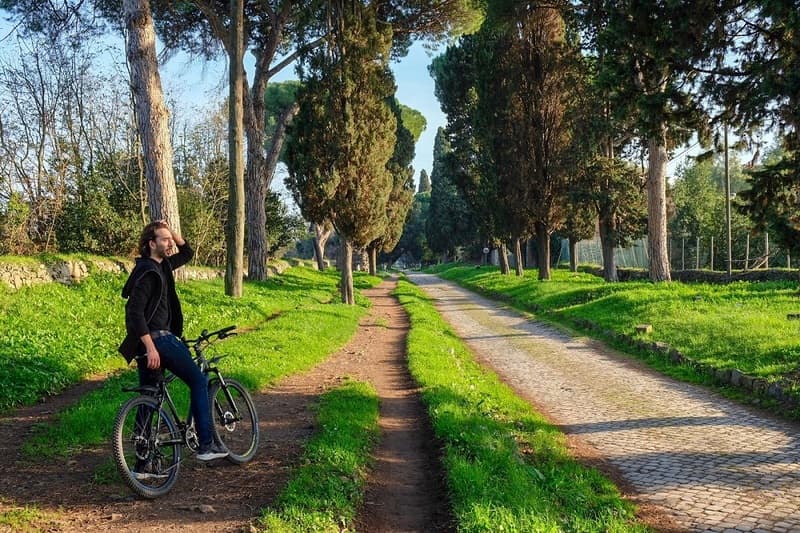
Appian Way Bike Tour
Book a tour today with Walks Inside Rome
Walks Inside Rome have been offering immersive, authentic, and educational tours of the Appian Way for over two decades.
With local, licensed guides who are experts in art, history, archeology, and food, we can transform your journey down Via Appia Antica into something truly unforgettable. Our private transfers and bike rentals are also sure to make your trip as comfortable or adventurous as you desire.
Visit our website or email us to book your Appian Way tour and much, much more. We can’t wait to hear from you so we can customize your Roman experience and explore the Eternal City together!

